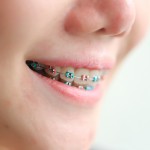
Skeletal class II malocclusion is reported to occur in between 25-30% of the population and is associated with mandibular retrusion. Fixed or removable functional appliances to encourage mandibular growth have been used as treatemtn approaches. The aim of the review and meta-analysis was to assess main skeletal and dentoalveolar effects of fixed functional appliances, alone or in combination with multibracket appliances (MBA), in the treatment of Class II malocclusion.
Methods
Searches were conducted in Pubmed, SCOPUS, Latin American and Caribbean Health Sciences (LILACS), (Scientific Electronic Library Online (SciELO), and The Cochrane Library without language restriction. Randomised controlled trials (RCTs) and prospective or retrospective controlled clinical trials (CCTs) were considered. Studies were excluded if a reliable indicator of the growth phase was not used. Two reviewers carried out study selection and data abstraction independently. Quality of studies was assessed using a points system. Supplementary mandibular growth with respect to the untreated control group was considered as the primary outcome. This outcome was defined either as total or composite mandibular length change.
Results
- 12 papers describing 11 trials were included. There were no RCTs, 6 prospective and 4 retrospective studies, 1 with an unclear recruitment strategy.
- 7 studies used the cervical vertebral maturation (CVM) method to assess growth and 5 the hand-and-wrist maturation (HWM) method.
- Overall supplementary total mandibular elongations for functional and comprehensive treatments are shown in the table below
| Functional treatment Mean (95%CI) |
Comprehensive treatments Mean (95%CI) |
|
| Pubertal patients | 1.95 mm (1.47 to 2.44) | 2.22 mm (1.63 to 2.82) |
| Post-pubertal patients | -1.73 mm (-2.60 to -0.86) | 0.44 mm (-0.78 to 1.66) |
Conclusions
The authors concluded
Fixed functional treatment is effective in treating Class II malocclusion with skeletal effects when performed during the pubertal growth phase. Both mandibular elongation and maxillary growth restraint are seen. Skeletal effects alone would not account for the whole Class II correction, with dentoalveolar effects always present, even in patients treated during puberty.
Commentary
The authors have used a broad search strategy and have chosen to include both prospective and retrospective study designs. With their chosen question being a narrowly focused one this dis provide some studies to review. Although, this increase the risk of selection, ascertainment and reporting bias within the studies chosen all of which has implications to take into consideration when assessing the findings. The authors also noted selective outcome reporting a wide range of appliance used and variations in treatment times from 6-18 months, which also needs to be considered.
A recent Cochrane review (Thiruvenkatachari et al 2013) looked at one and two phase treatments for class II malocclusions . They included 17 RCTs and although the overall quality of evidence was considered low found that it suggested that, ‘providing early orthodontic treatment for children with prominent upper front teeth is more effective in reducing the incidence of incisal trauma than providing one course of orthodontic treatment when the child is in early adolescence. There appears to be no other advantages for providing treatment early when compared to treatment in adolescence.’
Links
Perinetti G, Primožič J, Furlani G, Franchi L, Contardo L. Treatment effects of fixed functional appliances alone or in combination with multibracket appliances: A systematic review and meta-analysis. Angle Orthod. 2014 Sep 4. [Epub ahead of print] PubMed PMID: 25188504.
Thiruvenkatachari B, Harrison JE, Worthington HV, O’Brien KD. Orthodontic treatment for prominent upper front teeth (Class II malocclusion) in children. Cochrane Database of Systematic Reviews 2013, Issue 11. Art. No.: CD003452. DOI: 10.1002/14651858.CD003452.pub3.

[…] Dental Elf – 10th Oct 2014 – Fixed functional appliances for treatment of skeletal class… […]